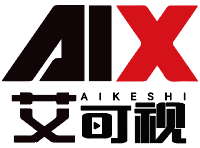Noong mga nakaraang taon lamang, ang mga interaktibong board ay nag-iba ng karaniwang mga silid-aralan sa mga buhay na sentro ng pagkatuto, na nagdaragdag ng spark para sa parehong mga guro at mga bata. Ang blog na ito ay tumitingin kung paano nagsimula ang mga board na ito, kung paano binago ang paraan ng pagpaplano ng mga aralin, at kung ano ang mga benepisyong iniaalok nito sa mga paaralan ngayon.
Mula sa Mga Simpleng Whiteboard hanggang sa Mga Maagang Interaktibong Imbensiyon
Ang interactive boards ay nagsimula sa mga simpleng whiteboard na malinis at madaling isulatan, ngunit mabilis na nangailangan ang mga guro ng higit pa sa mga plain markers. Noong huling bahagi ng 1990s, unang lumitaw ang tunay na interactive na whiteboards, na nagbigay-daan sa mga guro na gumamit ng makukulay na slide at mga gawaing panggrupong hindi static kundi gumagalaw. Nang makakonekta ang mga board na ito sa computer, maaari nang ipalabas ang mga video at laro-quiz sa pamamagitan ng screen, kaya't bawat asignatura ay naging mas bago at masaya.
Mga Pag-unlad sa Teknolohiya: Pagpapahusay ng Pakikipag-ugnayan at Pakikipagtulungan
Dahil sa mabilis na mga pag-upgrade ng teknolohiya, ang mga bagong board ay nagdala ng malalaking pag-unlad kung ano ang kayang mahawakan at maagaw ng mga estudyante. Ang touch-sensitive glass ay kayang kumita ng daliri, panulat, o kahit isang palad na nakahinga sa gilid, upang maraming mag-aaral ang makisali nang sabay-sabay. Dahil sa pagbabagong ito, ang mga guro ay nag-incline sa mga estilo na nakatuon sa estudyante, imbitasyon sa mga bata na sumulat, mag-drag, o umangat ng mga sagot habang pinapanood ng buong silid. Ang kakayahang mag-underline, magbilog, o ilipat ang mga bagay sa screen nang real time ay nagpaparamdam sa mga leksyon na mas nakikibahagi, tumatawid sa iba't ibang estilo ng pagkatuto at nagpapalakas ng pakikipagtulungan sa mga kaklase.
Cloud Integration: Pag-uugnay sa Face-to-face at Remote Learning
Ang teknolohiya ng ulap ay nag-boost sa mga interactive board. Ngayon, ang mga guro ay makakakuha ng online resources, i-upload ang mga leksyon, at gabayan ang mga estudyante nang remote sa tunay na oras. Mahalaga ito nang mag-apply ang COVID-19 ng hybrid schedules sa mga paaralan, pinagsama ang klase at online learning. Sa mga board na ito, maayos na maililipat ang aralin mula harapan ng silid hanggang sa screen ng estudyante sa bahay, panatag na patuloy ang progreso.
Mga Multifaceted na Benepisyo ng Interactive Boards sa Edukasyon
Ang mga bentahe ng interactive boards ay lampas pa sa pagpapanatili ng alerto ng mga bata. Ayon sa mga pag-aaral, kapag nag-aaral ang mga estudyante nang interaktibo, mas matagal nilang natatandaan ang mga konsepto at karaniwang mas mataas ang kanilang iskor sa pagsusulit. Ang mga quiz, video, at laro sa touch-screen ay nagpapalitaw ng kuryusidad at hinihikayat ang mga mag-aaral na mag-isip nang kritikal at lutasin ang mga problema nang mag-isa. Tinatanggap din ng mga board na ito ang bawat estudyante, nagbibigay ng bagong paraan sa mahihinang bata, mga estudyanteng nagsasalita ng Ingles, at iba pa upang makisali sa talakayan at ipakita ang kanilang nalalaman.
Ang Kinabukasan ng Interactive Boards sa Mga Silid-aralan
Tumingin sa hinaharap, ang interactive boards ay tila magiging pangunahing gamit sa silid-aralan. Dahil patuloy na umuunlad ang teknolohiya, malamang makikitaan ng mga silid-aralan ang mga tampok tulad ng naka-embed na AI, real-time collaboration tools, at mas maayos na menu na madaling gamitin ng lahat. Ang mga paaralang bumibili ng ganitong uri ng boards ay bihirang tumigil doon; kinukuhang oras din nila ang pagsasanay sa mga guro upang tiyakin na bawat pagpindot at pag-swipe ay nagdaragdag sa pagkatuto imbis na mawala sa oras. Malamang lumaki pa ito habang pinagtutuunan ng mga tagapagturo ang paghahabi ng aralin sa mas buhay at kasiya-siyang karanasan.
Sa kabuuan, ang mas matalinong boards ay nakapagbago na ng larong ito, nagbibigay-daan sa mga guro na ipakita ang mga ideya sa bago at nakakahimok na paraan habang hinihikayat ang mga estudyante na lalong mabigo sa bawat paksa. Kung ang kasaysayan ay anumang gabay, ang patuloy na pagdating ng bagong teknolohiya sa mga paaralan ay magbubukas pa ng daan sa mga kapanapanabik na bagong pamamaraan at mas mayaman, masaya at mas kasiya-siyang pagkatuto.
Talaan ng mga Nilalaman
- Mula sa Mga Simpleng Whiteboard hanggang sa Mga Maagang Interaktibong Imbensiyon
- Mga Pag-unlad sa Teknolohiya: Pagpapahusay ng Pakikipag-ugnayan at Pakikipagtulungan
- Cloud Integration: Pag-uugnay sa Face-to-face at Remote Learning
- Mga Multifaceted na Benepisyo ng Interactive Boards sa Edukasyon
- Ang Kinabukasan ng Interactive Boards sa Mga Silid-aralan


